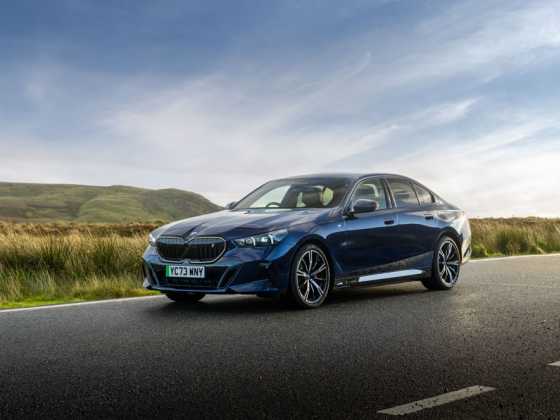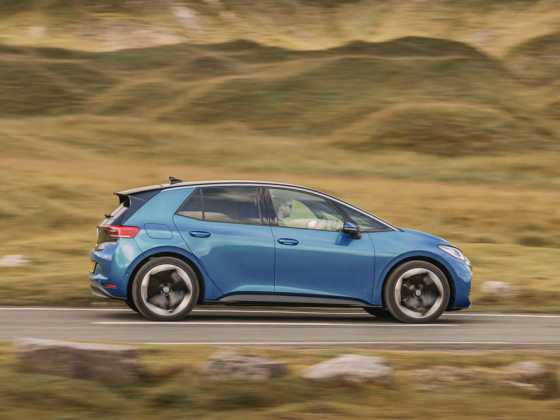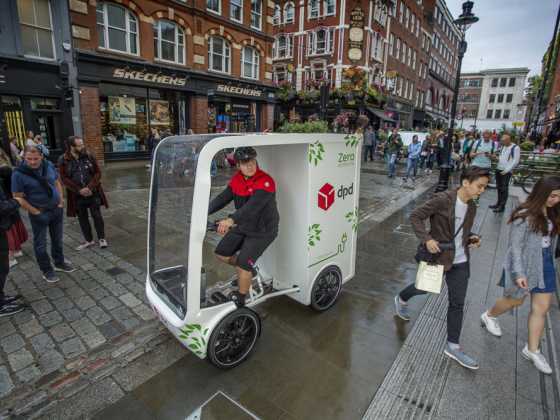Driving sustainability success

Grundon Waste Management’s repowered electric refuse vehicle – which is fuelled by the waste it collects – is the company’s latest innovation to decarbonise its fleet. John Stephens, general manager for logistics, explains the project and other efforts to create a sustainable fleet
Grundon prides itself on the sustainability measures it takes across the business.
Since 2000, we’ve reduced carbon emissions by almost 80 per cent through a series of measures, including an ongoing energy self-sufficiency programme and investment in state-of-the-art technology. And that is at the same time as growing the business by over 270 per cent and more than doubling our number of employees.
When it comes specifically to our vehicle fleet, the change to sustainable fuels is driven both by our own desire to reduce the use of fossil fuels and by our customers’ demands.
Every year, we partner with a publication in the facilities management sector to survey facilities managers about the issues that really matter to them. This year, ‘commitment to environmental issues’ and ‘transparency’ came out as the top two requirements facilities managers are looking at when dealing with a waste management provider.
It was a very clear message that they want to see us embracing the green agenda and have tangible evidence of what we are actually doing to make a difference.
Electric waste collection
Introducing our all-electric repowered waste collection vehicles is exactly that. A real-life demonstration of how seriously we are delivering sustainability change.
There’s a reason why we are especially proud of this development, notably because we believe we have created a UK first in having a waste vehicle that is now powered by the waste it collects.
Every day, when our repowered electric waste collection vehicle goes out on its rounds serving commercial customers across London and the wider Thames Valley, it brings back an average of five tonnes of non-recyclable waste. That waste is deposited into our joint venture Lakeside Energy from Waste (EfW) treatment facility, which is right next door to our Colnbrook depot where the electric vehicle is based.
The waste is incinerated at 1,000 degrees Centigrade, generating heat which in turn powers a steam turbine to create electricity.
For every tonne of non-recyclable waste deposited, the EfW generates around 620kW of power. Therefore, a typical daily round of five tonnes will see the EfW capable of generating 3,100kW of energy per vehicle – 280kW goes to recharge the vehicle each time and a further 2,820kW of electricity is exported to the National Grid on a daily basis – enough to power an average-sized house for a year.
To make recharging simple, we installed an an EV charging point directly at the side of the EfW, so the driver literally plugs the vehicle in at the end of the day. It’s a great example of the circular economy in action and, as far as we know, no-one else is doing this.
Eventually we will run a direct feed from the EfW to the depot so our entire Colnbrook operation will become energy self-sufficient. This will be in addition to the solar panels which are already installed on the roof of the depot, which generate 212,000 kWh of sustainable energy a year, currently delivering a total carbon saving of 126 tonnes a year.
Of course, projects like this take years of research and major investment – that’s why we’re spending some £5 million a year towards creating a greener, cleaner fleet. No mean feat when you consider we have 336 commercial vehicles in total.
Further electric vehicles
Our Colnbrook EV aside, we already have a second repowered electric waste vehicle operating in Bristol, and a third repowered electric waste vehicle will be operational in late August, serving the Oxford area. We have also invested in our first new Scania electric waste collection vehicle, shortly due to start collections in Reading and Newbury.
Although the Scania purchase is helping to speed up our electrification process, our main focus remains on converting our existing diesel waste collection vehicles (Mercedes-Benz Econic with a Dennis Eagle body) to electric.
We have two more repowered electric vehicles coming online later in the year, servicing Banbury and more routes in London.
With the exception of the Colnbrook vehicle, all other EVs are powered in the traditional way, using electricity drawn from the National Grid. Across our different locations we’ve already installed 53 electric charging points, a figure which is being expanded all the time.
How we got here
Getting to this point has been a long road. We started trials of an all-electric repowered refuse collection vehicle in 2021, working with our Gloucester-based partner Refuse Vehicle Solutions (RVS), a leader in the remanufacture of waste vehicles.
The trial vehicle had been developed by RVS as part of a joint initiative with Dutch company EMOSS, specialists in converting diesel vehicles into electric vehicles.
It was important to establish both the range and suitability of the technology, especially bearing in mind that the batteries need to be able to both power the vehicle and operate the hydraulic and compulsion systems that manage collections, bin lifts and compaction processes.
We spent a great deal of time with both RVS and EMOSS to make sure we were investing in the best technology to meet the needs of our customers.
Now we’re finally there and the vehicles are on the road, the feedback has been excellent. The repowered EVs have been flying Grundon’s sustainability flag recently at events we service such as Royal Ascot and the British Grand Prix at the Silverstone Circuit.
Where do we go from here?
We’re pressing ahead with the electrification process across the fleet where it is practicably possible to do so. The weight of the vehicles, or more specifically the weight of the additional batteries is a concern, however this may change in the near future allowing up to 2 tonne offsetting the weight of the batteries enabling payload to be achieved.
There are also limits to the type of vehicles that could (or can be) repowered and this is also impacted by available charging facilities further afield.
For example, we have 23 bulk tankers and eight wet vacuum tankers. The powder tankers usually operate on much longer journeys, which means electricity isn’t currently going to be the best option.
We have been looking at hydrogen (or a hydrogen fuel cell), a route we first went down in 2017. Working with hydrogen technology specialist ULEMCo, we launched our first ultra-low emission hydrogen/diesel dual-fuel waste collection vehicle – another first for the commercial waste industry – and have continued to monitor the technology ever since.
The challenge however, is that hydrogen fuelling options are still limited and, until that improves, the pace of change will be slowed. One idea we are looking at is if we could power hydrogen-fuelled vehicles from hydrogen produced by waste treatment processes.
Until then, we take care to specify the cleanest, leanest Euro 6 diesel engines, and we provide driver training to help maximise fuel efficiency.
It’s not just our waste collection vehicles. Sixty-eight percent of our company cars are now electric – we expect that figure to be 100 per cent electric within the next 18 months – and we are also changing our fleet of small commercial box vans (typically used for collections of smaller volumes of hazardous and clinical wastes) to EVs.
Of course, the technology is changing and improving all the time. Back in 2014, we took the first steps when we became the first of the major waste industry players to adopt CarbonNeutral® certification across our vehicle fleet. It was something welcomed by our customers because it ensured that waste collections did not add to their carbon footprint.
Today, we can (and do) go so much further down the sustainability and alternative fuel route and we’re helping our customers get there too.






